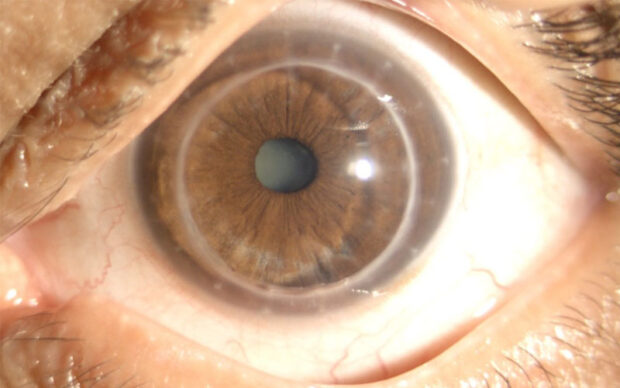
Cornea eye transplant surgery is a procedure or operation that removes a damaged cornea and replaces it with healthy and suitable corneal tissue from an eye donor.
The cornea of the eye is the outermost part of the eye which is shaped like a transparent dome and has a very vital function for visual performance. It’s a shame because the cornea of the eye is a part that is susceptible to problems and damage. When this happens, one of the actions that can be taken is to transplant the cornea so that it can heal.
Getting to Know Eye Transplants
An eye transplant replaces damaged corneal tissue with corneal tissue that is still healthy and in good condition and comes from a random donor.
The cornea works to protect the eyes from attacks by dirt, dust, and UV rays which are harmful to eye health. If you underestimate this, you could experience serious vision problems.
Another function of the cornea is to regulate the entry of light into the lens of the eye so that we can see more clearly and clearly.
When your cornea experiences damage or problems, there are several ways you can do it, but one procedure that is widely recommended is a corneal transplant.
People Who Have to Get Eye Transplants
The goal is none other than to overcome disease and damage to the eyes. Undergoing this surgery will eliminate symptoms and reduce pain after vision problems can be resolved.
You need to know that this transplant procedure is the final step that you can only choose after much consideration and based on the doctor’s recommendations. In general, corneal transplantation can be performed for the following conditions.
- Condition of the cornea that bulges out (keratoconus)
- Thinning condition of the cornea
- The cornea is no longer clear
- Hereditary disease in which the endothelial cells in the cornea begin to malfunction and eventually cause eye fluid called Fuchs’ dystrophy to begin to accumulate
- Cornea that is scratched due to injury or infection
- There are ulcers on the cornea due to infection
- The cornea layer is swollen
- Complications caused by previous eye surgery
Preoperative Preparation
What you have to do and prepare before undergoing corneal transplant surgery is to have an eye examination. You must visit a doctor to undergo an examination and check whether a condition is found that is at risk of causing post-operative complications.
The following is the inspection process that you need to carry out.
Measuring Your Eyes
The doctor will carry out an examination and determine what size cornea donor is suitable for your needs.
Check the Drugs Used
You must be open and tell about the medications you have been taking recently. You may be advised to stop using certain medications before and after undergoing the transplant surgery procedure.
Check Ongoing Treatment
You may need to undergo treatment for other eye diseases that are not directly related before undergoing surgery. It could be that you are experiencing an infection or inflammation.
This kind of eye health problem can affect the success rate of transplant surgery. You need a doctor’s help to overcome this problem first before undergoing actual surgery.
Cornea Transplant Surgery Process
Here is the transplantation process:
1. Anesthesia
Before you undergo cornea eye transplant surgery, of course, you will undergo an anesthesia procedure first.
The level of anesthetic to be given will be adjusted to your needs and at the discretion of the doctor. The operation will generally take 1 to 2 hours.
2. Corneal Removal Process
Then the surgeon will begin to remove the damaged or problematic cornea. After that, the doctor will replace it with a cornea obtained from a donor.
3. Cornea Replacement
The doctor can replace the entire damaged cornea, or only replace the outer layer, or it can also reach the inside of the cornea.
4. Corneal Suturing
After the process is underway, the doctor will start sewing with small stitches to hold the new cornea/part of the cornea in the specified position.
Care After Surgery
The recovery steps that need to be taken still depend on the type of corneal transplantation procedure you are undergoing. For more severe cases, you will usually receive treatment in a hospital for a while. Meanwhile, if the case is mild, maybe you can go home straight away that day.
The doctor will usually give you medicated eye drops. Apart from that, you will also get a type of medicine that functions to reduce swelling, infection, and pain that may appear after the completion of the operation.
The use of eye drops is to help reduce corneal rejection. You are advised not to do activities such as swimming and lifting heavy weights at the gym or home until you have received a follow-up examination from a surgeon.
When you want to exercise, first consult with your doctor about whether exercise is safe for your eye condition. You also have to ensure that you carry out continuous and disciplined post-operative eye care.
If you experience other problems after surgery, you may be able to have surgery to change the shape of your cornea. This is why it is important to continue making regular visits to your eye specialist regularly and check whether the condition has improved and is as expected. This can also see if there is any rejection of your new cornea.
Possible Risk of Complications
You don’t need to worry too much because in general cornea eye transplant surgery is safe for anyone. However, to alert you to be more careful, here are some small risks of eye complications that may occur.
- Eyes infected
- The occurrence of cataracts
- Increased pressure in the eyeball
- Eyes become cylindrical
- Inflammation of the uvea or middle layer of the eye
- The retina is damaged
- Minor bleeding
- Rejection of the new retina
In some cases, the immune system actually attacks the donor cornea. You can overcome this by using another cornea.
You have to make a lot of considerations and listen to a lot of doctor’s advice so that you can get cornea eye transplant surgery, which is now widely considered a very necessary action for people who experience disorders of the cornea of the eye. Hopefully, the review above is useful.
